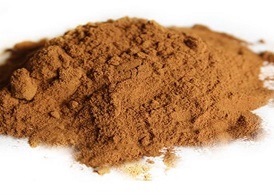In the past, biobased materials and chemicals earned scepticism. But the next generation offers high value in specialty chemicals, biopolymers and advanced materials. A clear value proposition when compared with their petro-based counterparts, says Lux Research; but smart business execution is critical to eventual success.

Last week, Lux Research, a Boston-based technology consultancy firm, published a report ‘Hunting for Value and Performance in the Biobased Materials and Chemicals Space.’ In their press release, Ross Kozarsky, Lux Research Senior Analyst and co-author of the report, says: ‘Specialty chemicals, biopolymers, and advanced materials are all promising areas of technology development. With demonstrated performance benefits over petroleum-derived incumbents in uses from lubricants to personal care, opportunities exist for companies to utilize improved bio-based options.’ Lux Research analysts focused on six areas: advanced materials, adhesives, coatings, lubricants, personal care and cosmetics, and packaging; and they evaluated biobased companies on the Lux Innovation Grid, mapping them on ‘technical value’ and ‘business execution’.
Many biobased materials and chemicals have a good value proposition
I spoke to Ross Kozarsky on the phone. From our experience, I asked him, we judge performance to be the most important driver at present for the substitution of fossil-based materials by biobased materials and chemicals. Stronger than CO2, public appreciation of sustainability etc. Do you agree? Does this hold for all sectors?
‘Yes, on balance I agree. The first generation biobased materials (like starch-based plastics) were rather inferior. This brought them an underserved image poor quality.
Then industry moved to biobased drop-ins, biobased materials with the same qualities as their petro-based equivalents. But with present low oil prices, drop-ins lose on price, turning performance into the most important driver for change – although I prefer the expression ‘value proposition’ that includes both performance and price. A fine example of that is Avantium’s PEF; they claim it to have better gas-barrier properties, essential for beverage bottles. And in the area of lubricants, many biobased products show very good performance and price. It is not sufficient any more to rely on claims of sustainability.
That term is multi-faceted and has become a dubious marketing term. Moreover, ‘sustainability’ is increasingly broken down into separate claims that can be researched quantitatively; and on these parameters, some biobased materials appear not to be more sustainable than petro-based materials.’
Lignin, an interesting biobased feedstock to be further developed.

You list environmental concerns as the main driver in the area of coatings, in particular the prospect of new regulation. Is it true across this sector that public perception has become rather weaker as a driver for companies to increase the biobased content of their products?
‘In this area, environmental concerns are strong, but mainly propelled by regulation. Remember that this is mainly a B2B market and that public preferences therefore tend to have less impact. Nevertheless, the product’s value proposition has to be strong as well for products to be successful. Some major B2C brands like Ikea take up the challenge and do not wait for regulation to come.’
You mention sustainability as the driver in biobased packaging. But I guess that this is not in the area of biodegradability. Is it the drive for green sourcing by the major brands? Or does performance play an important role here, too? Particularly in the ‘niches’ you mention?
‘Biodegradability does have an impact, witness for instance the advent of biodegradable disposable plastic bags. In the broad sense, sustainability is a strong driver here. Biopolymers offer niches for companies seeking sustainable packaging solutions in markets like the $ 6.2 billion market for petroleum-based PET in bottles, jars and tubs. ‘Green sourcing’ could be an imprecise term too, one that needs a more quantitative approach.’
Waste valorisation
‘And I would like to make a general comment on sourcing. Some biobased feedstock is essentially free of cost, an excellent starting point for new product development. Take the example of West Fraser, a large North American wood products company. It produces much lignin, at first just used for heat production. But it now has started to develop lignin-based materials. Their size allows them to use these new materials internally first, allowing them time to improve quality. In due time, they will be able to reap the benefits of this process. Waste valorisation is an important driver in the development of biobased materials and chemicals.’
Author
Diederik van der Hoeven
Source
Supplier
Avantium Technologies B.V.
Lux Research, Inc.
West Fraser Timber
Share
Renewable Carbon News – Daily Newsletter
Subscribe to our daily email newsletter – the world's leading newsletter on renewable materials and chemicals









